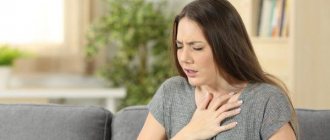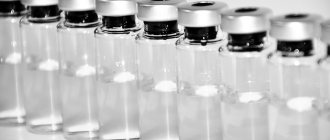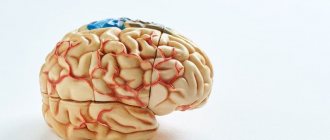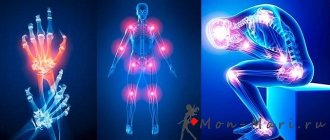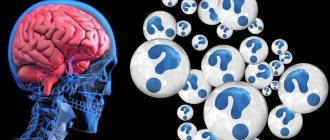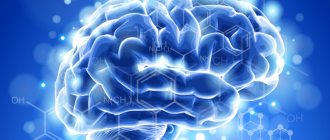When choosing which drug to use to reduce anxiety, Atarax or Grandaxin, you should familiarize yourself with the features of both and make sure that there are no contraindications to taking one of the drugs. It is not recommended to make decisions on your own; It is better to consult a doctor to select the best option.
To reduce anxiety, you can use Atarax or Grandaxin.
Compound
Atarax are white, oval-shaped tablets with demarcation. Each tablet form has the active component hydroxyzine hydrochloride, as well as a number of excipients:
- microcrystalline cellulose;
- colloidal silicon anhydride;
- magnesium stearate;
- lactose monohydrate;
- Opadry Y-1-7000.
Each tablet is packaged in blisters of 25 pieces each.
Indications for use
Recommended for patients with the following problems:
- aggressiveness;
- irritability;
- psychoemotional disorders;
- problems with the nervous system;
- alcohol abuse;
- for reassurance before surgical interventions;
- to relieve itching.
It will be useful not only for calming the nervous system and eliminating insomnia, but also in case of allergic reactions.
Simultaneous use in children, reviews
Child psychiatrists or neurologists prescribe such medications to young patients over the age of two for stuttering, insomnia, frequent tantrums, uncontrolled urination, and nervous tics.
Systematizing the reviews of parents, we highlight the main points of effective joint use of medications:
- after use, children sleep better, speech is restored, stuttering disappears;
- kids become more active;
- irritability is eliminated;
- In kindergarten, children settle in better and fall asleep calmly.
Children should be taken off such anti-anxiety medications gradually, this helps prevent recurrent nervous disorders.
How to use
The instructions for use prescribe a standard regimen for taking the drug, which, depending on the characteristics of the patient, can be changed by the attending physician. Atarax tablets have the following treatment regimen:
- Adults – 25-100 mg per day.
- Children under 6 years old – 1-2.5 mg per day.
- School-age children – 2-3 mg per day.
Take the drug with a small amount of water with food so that the tablets are better absorbed and do not harm the stomach. If not together with food, it is better to replace water with milk. If it happens that you do not drink the drug during a meal, then you should not take it in a double dose, because this can have a detrimental effect on the gastrointestinal tract.
Typically, administration involves dividing the daily dose into several times. Typically it looks like this:
- 12.5 mg – morning and afternoon;
- 50 mg – in the evening.
Atarax in liquid form has a slightly different principle of administration:
- Adults – 50-100 1 injection per day.
- For children – done at the rate of 1 mg per 1 kg of baby’s weight.
Injections are given intramuscularly. The liquid preparation should be stored in the refrigerator.
Atarax for anxiety disorders (review)
Ryabokon I.V.
Anxiety is a state of fear and anxiety experienced by a person in anticipation of trouble. The causes of anxiety are varied: emotional instability, a sharp change in living conditions, the upcoming completion of a difficult task, etc. Anxiety may arise due to anticipation of a future threat (punishment or loss of loved ones). Typically, anxiety leads to defensive reactions. Anxiety is the result of frustration or its anticipation and is the primary psychological manifestation of stress. Z. Freud considered anxiety as a symptomatic manifestation of an internal emotional conflict caused by the fact that a person unconsciously suppresses sensations, feelings or impulses that are too threatening or irritating for him. With the emergence of anxiety, behavioral activity increases, the very nature of behavior changes, and additional physiological mechanisms of adaptation to changed conditions are activated.
Anxiety is a person’s tendency to experience a state of anxiety. Most often, a person’s anxiety is associated with the expectation of social consequences of his success or failure. Anxiety and anxiety are closely related to stress. On the one hand, anxious emotions are symptoms of stress. On the other hand, the initial level of anxiety determines individual sensitivity to stress. Like stress in general, the state of anxiety cannot be called unequivocally bad or good.
Sometimes anxiety is natural, adequate, and useful. Everyone feels anxious, restless or stressed in certain situations, especially if they have to do something unusual or prepare for it. For example, giving a speech in front of an audience or passing an exam. A person may feel anxious when walking down an unlit street at night or when lost in a strange city. This type of anxiety is normal and even useful, as it prompts you to prepare a speech, study the material before an exam, and think about whether you really need to go out at night all alone.
In other cases, anxiety is unnatural, pathological, inadequate, harmful. It becomes chronic, constant and begins to appear not only in stressful situations, but also for no apparent reason. Then anxiety not only does not help the person, but, on the contrary, begins to interfere with him in his daily activities.
The line between a “normal” stress response and a pathological anxiety disorder is often quite blurred, and it is difficult for a person to know when to seek professional help. These subsyndromal anxiety disorders are the most difficult to diagnose and often remain untreated, while having an extremely negative impact on the quality of life of the patient and those around him. It is believed that treatment options should be considered when anxiety about everyday events is beyond the patient's control. The following disorders may also be the reason for prescribing therapy: nervousness, fussiness, impaired concentration, irritability, sleep disturbance, symptoms of autonomic dysfunction.
In everyday medical practice, various herbal medicines, tranquilizers, barbiturates, antidepressants, and some antipsychotics are used to treat anxiety disorders.
One of the most powerful and quickly relieving sleep disorders and anxiety are benzodiazepine drugs. Among the disadvantages of treatment with benzodiazepines, the following should be mentioned: withdrawal syndrome (rapid resumption or transient increase in symptoms after discontinuation of the drug), the risk of addiction and the formation of drug dependence, impaired cognitive functions (attention, concentration, memory), and impaired coordination. Therefore, benzodiazepine drugs are not recommended to be taken for more than 2 weeks.
Hydroxyzine (Atarax) is neither a benzodiazepine nor a phenothiazine. The non-benzodiazepine anxiolytic Atarax (hydroxyzine) is a derivative of diphenylmetane, an antagonist of histamine H1 receptors.
Hydroxyzine is one of the oldest psychotropic drugs; it was introduced into clinical practice back in 1955. Atarax has a pronounced anti-anxiety, antihistamine, antipruritic and antiemetic effect. By reducing the concentration of histamine at the central level, it has the property of reducing anxiety, reducing aggressiveness and causing a persistent anxiolytic effect [2]. The drug acts within 15–30 minutes after oral administration (Cmax is noted 2 hours after taking the drug) and maintains this effect for 6–8 hours. Its main advantages are the absence of the “rebound” phenomenon, addiction (dependence), withdrawal symptoms and positive effect on cognitive function.
Hydroxyzine has been successfully used in a variety of areas of medicine: as a means of controlling tobacco smoking [3]; in pediatric dentistry [4]; for its intended purpose – for the treatment of anxiety neurosis (even in the era of the existence of such a nosological form) and for “mild” depression [5]; for behavioral and learning disorders in children [6]. Due to its antihistamine properties, hydroxyzine was used in allergology, to treat itching [7], and for urticaria pigmentosa (mastocytosis) in children [8]; in oncology [9]; in burn patients [10], in narcology [11] and in many other conditions.
Recently, there has been interest among researchers in the use of hydroxyzine in patients with generalized anxiety disorder (GAD). The prevalence of this pathology and the associated burden of social consequences in the current scientific literature appear to be quite significant. According to one review [E.G. Starostina. Generalized anxiety disorder and anxiety symptoms in general medical practice. Rus. honey. magazine 2004; 22 (222), 12: 1277] with reference to numerous foreign works, “GAD is among the top ten diseases with the greatest temporary disability and according to this indicator is on a par with coronary artery disease, diabetes, joint diseases, peptic ulcers, and mental disorders – with depression or even ahead of it.”
In a double-blind, placebo-controlled RCT for the treatment of GAD [17], the anxiolytic activity of Atarax at a dose of 50 mg (in 3 doses of 12.5 mg in the morning and afternoon plus 25 mg in the evening) was shown, which was manifested in a statistically significant, rapid and significant decrease symptoms of anxiety already at the end of the 1st week of treatment, which persisted for another 1 week after cessation of treatment (n=110; course duration 4 weeks; Hamilton-A score). In this case, there was no phenomenon of “rebound” or return of anxiety.
In another double-blind multicenter RCT [18], in which, along with placebo control, the benzodiazepine drug bromazepam was also used, it was shown that hydroxyzine used for 3 months was statistically significantly different from placebo and was as effective as the comparison drug. Moreover, with benzodiazepine, side effects of severe drowsiness were observed twice as often as with hydroxyzine (n = 334; dose of hydroxyzine 50 mg/day in 3 divided doses; bromazepam - 6 mg/day in 3 divided doses; improvement on the Hamilton-A scale >50 %; p<0.03 at the end of the 6th week and p<0.001 - after 12 weeks; the number of patients who responded to treatment: 40% at the 6th and 60% at the 12th week, respectively).
Another study [19] showed the effectiveness of Atarax (50 mg in 3 doses), comparable to that of the control buspirone (20 mg in 3 doses), with a statistically significant difference between Atarax and placebo on the 28th day of treatment (p<0.015) . There was no rebound phenomenon with abrupt withdrawal of both drugs (n=244; age 18–65 years).
In addition, one of the advantages of hydroxyzine is that, unlike benzodiazepines, it does not depress cognitive abilities [20] (triple crossover, double-blind RCT; comparing a single dose of 50 mg of hydroxyzine with a single dose of 2 mg of lorazepam and placebo; n = 9; healthy volunteers; 3-day interval before cross-over; assessment of cognitive functions 2–5 hours after taking comparator drugs).
Some studies have shown a positive effect of hydroxyzine on cognitive function [21] (comparison with lorazepam; double-blind multicenter RCT; n=30; GAD, Atarax 100 mg in 3 divided doses, lorazepam 4 mg in 3 divided doses; Beck score 28– th day of treatment). Unlike lorazepam, with the same anxiolytic activity, hydroxyzine restored cognitive function to normal limits.
Similar results were obtained in another, less conclusive study - an open RCT (A.E. Bobrov et al. Journal of Neurology and Psychiatry named after S.S. Korsakov. 1988; 2. GAD; n=50; outpatients; treatment course is 4 weeks, plus 2 weeks of follow-up).
Considering the characteristics of the drug (quick onset of action, good tolerability), lack of dependence and depression of the central nervous system make it an alternative drug to benzodiazepines in children and adolescents. In a study conducted at the Children's Psychiatry Center [23], Atarax was prescribed for various forms of mental illness in children and adolescents with manifestations of anxiety, irritability and insomnia-type sleep disorders, and its effectiveness was assessed. The study included 50 patients aged 5 to 18 years with various forms of mental illness, who were undergoing outpatient observation and treatment at the Children's Psychiatry Center. At the end of the 4th week of therapy, there was a decrease in the manifestations of anxiety and various fears noted earlier: falling asleep in the dark, staying at home in the absence of parents, fears of animals, noise of household appliances; in one case, a five-year-old boy could stay at home with a nanny without his parents (he had previously shown a pronounced affective reaction). In addition, all patients' sleep improved already in the second week of therapy, tearfulness, moodiness, and irritability were reduced. Simultaneously with the reduction of anxiety, the mood improved in 7 patients with a mixed anxious and depressive reaction caused by an adaptation disorder and with a mixed anxiety and depressive disorder, which was associated not with the direct antidepressant effect of Atarax, but with the comorbid dependence of anxiety and depression: anxiety was reduced - depression went away.
In a comparative study [22] of etifoxine and Atarax (hydroxyzine), the compared anxiolytics demonstrated high effectiveness in a wide range of psychopathological manifestations of adjustment disorders and generalized anxiety disorder. The results of therapy with etifoxine and Atarax showed the comparability of the clinical effect of the compared drugs, confirmed by a number of formalized indicators. The proportions of responders were comparable: 73.3 and 53.3% in the HARS assessment; 66.7 and 53.3% - as assessed by CGI-S for the groups receiving etifoxine and Atarax. The main clinical effect of the drugs in both groups was a decrease in the severity of manifestations of mental anxiety: the symptoms of internal tension (ethifoxine - in the 2nd week, Atarax - in the 3rd week), reactive (emotional) lability (one of the sub-items of “depressive mood”) were most quickly reduced "). In general, similar dynamics of cognitive anxiety were observed in both groups.
To summarize, we can reiterate that hydroxyzine (Atarax) has shown clear advantages over benzodiazepine anxiolytics in the treatment of anxiety disorders. Being as therapeutically effective as benzodiazepine anxiolytics, it does not produce rebound effects, does not depress cognitive function, and does not cause pathological dependence.
Literature:
1. Psychotropics 2000/2001 Lundbeck.
2. Krebs MO. Le trouble anxieux: cliniqu et implicacion neurobiologiques. La Revfue des Entretiens de Bichat 2001; 2 (5).
3. Turle G. An investigation into the therapeutic action of hydroxyzine/Atarax in the treatment of nervous disorders and the control of tobacco-habit. Brit J Psychiat 1958; 104: 82 rub. 33.
4. Lang L. An evaluation of the efficacy of hydroxyzine (atarax–vistaril) in controlling the behavior of child patients. J-Dent-Child 1965; 32, 4: 253–8)
5. R.Middlefell, K.Edwards Hydroxyzine/Atarax in the relief of tension associated with anxiety neurosis and mild depressive states. Brit J Psychiat 1959; 105:792–4.
6. Segal L, Tansley A. A clinical trial with Hydroxyzine (Atarax) on a group of maladjusted educationally subnormal children. J Mental–Science; Br J Psychiat from 1963; 1957; 103:677–81.
7. Rhoades R, Leifer K, Cohan R, Wittig H. Suppression of histamine-induced pruritus by three antihistaminic drugs. J Allergy Clin Immunol, 1975 Mar.; 55, 3: 180–5.
8. Kettelhut B, Berkebile C, Bradley D, Metcalfe D. A double-blind, placebo-controlled, crossover trial of ketotifen versus hydroxyzine in the treatment of pediatric mastocytosis. J Allergy Clin Immunol 1989 May; 83, 5: 866–70)
9. Broder L, Lean N, Hilsenbeck S. A randomized blinded clinical trial comparing delta–9–tetrahydrocannabinol (THC) and hydroxizine (HZ) as antiemetics (AE) for cancer chemotherapy (CT). PROC–AM–ASSOC–CANCER–RES; 1982; 23:514.
10. Vitale M, Fields–Blache C, Luterman. A Severe itching in the patient with burns. J burn care & rehabilitation 1991; 12, 4: 330–3.
11. Kaim S, Klett C, B. Rothfeld. Treatment of the acute alcohol withdrawal state: a comparison of four drugs. Agressologie: revue internationale de physio-biologie et de pharmacologie appliquees aux effets de l'agression, 1968; 9, 2: 305–8.
12. Chignon G. Le trouble Anxiete Generalise: du probleme diagnostique au defi therapeutique. Nervure J psychiat 1988; 11 (suppl.): 1–16.
13. Wittchen H–U, Jakobi F. Size and burden of mental disorders in Europe – a critical review and appraisal of 27 studies. Eur Neuropsychopharmacol 2005; 15: 357–76; For details, see the February issue of our magazine).
14. Goodwin R, Gorman J. Psychopharmakologic Treatment of generalized anxiety disorder and risk of major Depression. Am J Psychiat 2002; 159:1935–7.
15. Goodwin RD, Jack M. Gorman. Treatment of generalized anxiety disorder with psychotropic drugs and the risk of major depressive disorder
16. Martin P. Coprescription, Antidepresseurs et anxiolytiques: consequences pratiques de la meilleure connaissance desmecanismes d'action putatifs des anxiolytiques. Actuel Psychiat 2001; 19 (1/2): 2–7.
17. Ferreri M, Hantouche T, M. Billardon. Interet de l'hydroxizyne dans des troubles d'anxiete generalisee: etude controlee en double aveugle versus placebo. L'encephale 1994; 20: 785–91.
18. Llorka P. et al. Efficiency and safety of hydroxysyne in the treatment of generalized anxiety disorder: a 3-month double-blind study. J Clin Psychiatry 2002; 63:1020–7.
19. Lader Scotto J. A multicenter double–blind comparison of hydroxizine, buspirone and placebo in patient with generalized anxiety disorder. Psychopharmacology 1998; 139:402–6.
20. De Brabander A, Deberdt W. Effect of hydroxizyne on attention and memory. Human Psychopharmacology 1990; 357–62.
21. Samuelian J, Billardon M, Guillou N. Retentissment sur les functions cognitives de deux traits anxiolitiques chez des patients souffrant d'anxiete generalisee. L'encephale 1995; 21:147
22. Andryushchenko A.V., Beskova D.A., Romanov D.V. Psychopharmacotherapy of generalized anxiety (experience with the use of Strezam and Atarax) Mental disorders in general medicine No. 1; pp. 33–36
23. Rezakov A.A. Experience of using hydroxyzine (atarax) in children and adolescents. "PHARMIndex-Practik" issue 10; 2006, pp.37–39
Contraindications
During therapy, drinking alcoholic beverages is strictly prohibited, because Atarax greatly increases the destructive negative effects of ethyl alcohol on the central nervous system.
Doctors do not recommend this drug for the following diseases:
- glaucoma;
- porphyria;
- prostatitis;
- urinary disturbance;
- problems with bowel movements;
- dementia.
Do not use if you are hypersensitive to one of the components of the drug or to substances such as:
- aminophylline;
- ethylenediamine;
- cetirizine
Do not take the product while pregnant or during lactation. If it is necessary to take it during breastfeeding, then it is better to stop the process at this time.
Atarax and Phenibut, what is the difference?
In this article we will look at Phenibut or Atarax – which is better for therapy. Both medications are characterized by sedative properties. Similar parameters allow you to use them if you have:
- anxiety;
- alcohol syndromes;
- nervous disorders;
- anxiety.
Although each of the drugs has distinctive features, which are expressed in prescriptions and restrictions on use, composition and price.
Atarax is prescribed, in addition to the above-mentioned diagnoses, in the presence of the following conditions:
- skin itching;
- nervous excitement;
- increased irritability.
Phenibut is used for:
- obsessive states;
- psychopathy;
- insomnia;
- neuropsychic weakness.
The first drug, in comparison with the indications of phenibut, is not able to cope with insomnia. The medicine does not activate the brain's ability to concentrate and pay attention. Atarax calms the nerves well, and the second nootropic substance acts as a psychostimulating tool that improves brain activity by normalizing blood circulation.
By comparing the list of contraindications, you can also replace some of the differences between these two drugs. It is prohibited to use Phenibut:
- children under 2 years old;
- during pregnancy (first trimester);
- during breastfeeding;
- with individual intolerance;
- patients with gastrointestinal pathologies.
Atarax is not recommended:
- during pregnancy;
- during breastfeeding;
- for congenital diseases that provoke a decrease in hemoglobin concentration.
There are also differences in the composition of the drugs. The active ingredient in atarax is a diphenylmethane derivative (hydroxyzine dihydrochloride). Phenibut includes derivatives of gamma-aminobutyric acid. It contains dopamine-positive substances. The cost of drugs also differs.
Symptoms and treatment of overdose
If the permissible dosage of sleeping pills is exceeded (more than 200 mg per day) or the parallel use of Atarax with alcohol-containing drinks often leads to an overdose. The main symptoms include:
- lethargy;
- drowsiness;
- dry mouth;
- breathing problems;
- insomnia;
- convulsive syndrome;
- trembling of the upper and lower extremities;
- bruises.
If the above symptoms are detected, you must urgently call an ambulance.
The measures to remove the drug from the body are always the same - gastric lavage, drinking large amounts, taking activated carbon.
Side effects
Since this drug may not suit every person, various side effects may occur. These include the following symptoms:
- dry mouth;
- anuria;
- problems with bowel movements;
- lethargy;
- sleep disturbance;
- bad feeling;
- drowsiness;
- nausea and vomiting;
- weak breathing;
- headache;
- hypertension.
Somewhat less frequently, the patient experiences convulsive syndrome, trembling of the upper and lower extremities, and loss of consciousness. However, adverse reactions from Atarax do not manifest themselves strongly, therefore, by reducing the amount of medicine used, the course of the disorders will quickly change, and all symptoms will disappear after 1-2 days.
What does Mexidol help with?
Mexidol is a drug from the group of antioxidant drugs of the latest generation. The main effect of the drug is to protect the cell wall, stabilize the membrane, and significantly reduce active radicals, which are so harmful to the body. So what is Mexidol and what does it help with?
The mechanism of action of Mexidol determines the composition:
The drug is available in the form of tablets and solution for injection. There are also toothpastes with Mexidol, which are actively used in dentistry.
Action of the drug
The drug "Mexidol" has a pronounced effect on the cell membrane, increases its viscosity and enzyme activity, thus protecting against reactions with aggressive radicals. Thanks to the components of the drug, there is an increased formation of energy (ATP) in the mitochondria, and the transmission of impulses along nerve fibers is accelerated.
Why is the drug prescribed, for example, for Parkinson's disease? In addition to membrane-stabilizing, sedative, anticonvulsant effects, the product helps saturate the blood with oxygen. In some cases, the drug belongs to the group of nootropic drugs that stimulate the activity of the brain and nerve cells. As a result of constant use, Mexidol increases mental activity, and a person becomes more resistant to external stress. A special inhibitory effect on the development of degenerative processes in the brain has found application in the treatment of patients with parkinsonism. Mexidol has been actively used here for a long time. The administration of the drug has a positive effect on peripheral blood. During the course of treatment, Mexidol reduces its viscosity; with increased levels of free cholesterol and lipoproteins, it decreases significantly.
Does this drug increase or decrease blood pressure? Since relaxation of the vessel walls occurs, some hypotensive effect is observed.
Mexidol and alcohol have a special interaction. Compatibility with antidepressants, anticonvulsants, and antipsychotic drugs has also been changed. Therefore, when using in combination and prescribing therapeutic doses, this property of the drug should be taken into account.
Indications for use
The drug Mexidol is especially indicated for the treatment and prevention of diseases in patients with neurological disorders of varying severity.
What does Mexidol help with?
- Atherosclerotic lesion of cerebral vessels.
- Acute circulatory disorders in the brain.
- Encephalopathy resulting from impaired blood circulation.
- Vegetative-vascular dystonia (VSD).
- Consequences of a stroke or severe atherosclerotic lesion: memory impairment, disturbances in speech function, marked decrease in intelligence.
Also, the drug can be used for a number of psychiatric diseases, the occurrence of which is associated with impaired blood circulation in the vessels of the brain and with a massive attack by free radicals. Mexidol has the following indications for use:
- Neurosis, panic.
- Withdrawal syndrome in alcoholism.
- Parkinson's disease.
- Severe intoxication with antipsychotic drugs prescribed for the treatment of certain psychiatric pathologies.
Who is the drug contraindicated for?
There are contraindications for Mexidol:
- The drug should not be used by persons with individual intolerance to the components of the product.
- The medication is prohibited for acute and severe chronic dysfunctional disorders of the liver and kidneys.
How to take it correctly?
Is it possible to drink ethyl alcohol while taking medication?
The dosage of the drug "Mexidol" is prescribed for each person, depending on his disease, individually. But the general instructions for use recommend taking 1 tablet three times a day. The maximum amount of the drug allowed for daily use is 600 mg.
How long before it is possible to stop taking the medicine?
The course of treatment lasts at least one and a half months. When treating withdrawal syndrome in patients with alcoholism – a week. For Parkinson's disease, long periods of use are indicated.
It is not allowed to abruptly discontinue the drug, as this may lead to negative consequences. Stop taking the medicine, gradually reducing the daily dosage of Mexidol. The instructions for using its analogues differ only in dosage.
In dentistry, the medication is used in the form of toothpastes and solutions. Rinsing is carried out three times a day until the desired medicinal effect is achieved.
Injection solution 5% is used for intravenous and intramuscular administration of the drug. The maximum daily intravenous dose is 1200 mg. It is not recommended to exceed it, since side effects of Mexidol may occur. You must first dilute 1 ampoule of the medicine in 200 ml of saline solution. The rate of intravenous infusion using a dropper should be low - about 60 drops/min. Injection is carried out using a syringe; Mexidol should not be diluted in this case. Speed – 1 ampoule for 5 minutes.
An intramuscular injection is made into the upper outer quadrant of the buttock.
What side effects may occur from taking it?
Does Mexidol have side effects? Hardly ever.
The manufacturer assures that there are almost complete absence of any side effects of the drug. When taking Mexidol, side effects are extremely rare even at maximum therapeutic doses. Does not affect muscle tone and strength, coordination of movements.
If all the rules of therapeutic administration are followed, the drug does not cause drowsiness, does not affect systemic blood pressure, the level of activity of liver enzymes, the regulation of respiration, or the qualitative and quantitative composition of peripheral blood.
In extremely rare cases, when the daily dosage of Mexidol was significantly exceeded, side effects occurred in the form of impaired motor activity, vomiting and nausea, dry mucous membranes, and severe drowsiness.
Provided that a person has an individual intolerance to the components of the drug, allergic manifestations may develop.
When used topically in the form of rinses or toothpastes, no negative reactions were detected.
If you take Mexidol with alcohol, the drug becomes less effective.
Drivers, as well as people in professions that require increased attention and concentration, should be especially careful when using this product in the form of tablets. The medicine is dispensed from the pharmacy according to the prescription of the attending physician.
During pregnancy and childhood
The medicine is not recommended for use by pregnant women, especially in the last trimester; it is better to replace Mexidol with other means.
In childhood, the drug can be used to treat various pathologies: traumatic brain injuries (as an emergency aid), localized infections of the nervous system of a purulent nature. According to the description of the drug, the prescription of Mexidol for a child should be under the strict supervision of a pediatrician.
Use with other drugs
As already mentioned, the drug has an agonistic (enhancing) effect for a number of medications. These include:
- Any treatment for Parkinson's disease.
- Painkillers.
- Benzodiazepines.
- Anticonvulsants, drugs for the treatment of epilepsy.
- Sleeping pills.
- Tranquilizers.
- Antidepressants.
Mexidol and alcohol interact to help reduce the severity of intoxication. The product weakens the effect of ethyl alcohol on the body, stimulates the removal of its radicals from the body, and therefore is used to treat alcohol dependence.
No special reactions with other groups of drugs were identified.
Comparison with similar drugs
"Actovegin" is a cheap analogue of "Mexidol" in ampoules and tablets, produced on the basis of calf blood. This is what causes quite frequent intolerance to the drug in many people. In general, Actovegin has similar properties to Mexidol. It also stimulates the regeneration of damaged tissues and improves trophism. But the medication is often used not only to improve blood rheology, but also to treat the consequences of diseases, for example, ulcers of trophic origin.
"Cavinton". The main active ingredient of the Mexidol analogue in tablets is vinpocetine (a semi-synthetic substance from vincamine). It has a pronounced vasodilating property, and, as a result, the drug reduces high blood pressure. The drug is used to improve cerebral circulation, since, thanks to its special chemical composition, it helps transport oxygen and glucose into the brain tissue. In addition to neurology and psychiatry, Cavinton began to be widely used in otorhinolaryngology and ophthalmology. Mexidol and Cavinton can be prescribed together, but they should be administered (intramuscularly or intravenously) separately.
"Mildronat". Like Mexidol, its analogue is also a medicine that can dilate the wall of blood vessels. In addition to the listed properties, it stimulates the body's defenses. It is actively used for the treatment of coronary heart disease and post-infarction conditions. When prescribed together with Mexidol, they enhance each other’s effect. It is not recommended to drink simultaneously with alcoholic beverages.
"Cortexin". The medicine is made from bovine brain polypeptides. May cause allergic reactions. Can be used as a cheap substitute for Mexidol or together with it for hypoxia in newborns.
"Nootropil" The main active ingredient of the drug is piracetam. It is indicated for the treatment of the consequences of a stroke, memory and intelligence disorders, alcoholism, decreased activity in learning and fatigue in children. There are practically no side effects.
There are other analogues of Mexidol: Mexiprim, Neurox, Metostabil, Cerecard, Medomexin. All of these drugs have a similar chemical composition and action aimed at regulating blood circulation in the brain and detoxifying the body.
Average prices in pharmacy chains and storage conditions
The average cost of Mexidol depends on the form of release:
- Tablets cost about 650 – 900 rubles.
- Pack of 10 ampoules of 2 ml – 860 – 1020 rubles.
- Toothpaste – 75 – 90 rubles.
It is recommended to store the drug in a dark, dry place at room temperature (tablets) or in the refrigerator (liquid forms) for no more than 3 years from the date of release.
Compatibility of Atarax with other drugs
Before purchasing medication, you should tell your physician about other medications you are taking in addition. Atarax significantly affects the action of certain medications. It is able to enhance the effect of various drugs that help calm the nervous system. Such drugs include:
- sleeping pills;
- barbiturates;
- narcotic analgesics.
To prevent medications from interfering with each other, it is necessary to reduce the amount of Atarax by half.
Important! You can buy the drug in the public domain, without presenting a prescription.
Analogs
The drug Atarax in the Russian Federation is dispensed only with a doctor's prescription. You can purchase Atarax, the price of which depends on the region of the country and the size of the package, at the pharmacy. The average cost is about 300 rubles.
There are also a number of medications that have almost the same composition and similar effects. The most popular analogues include the following drugs:
- Adaptol;
- Afobazole;
- Phenazepam;
- Zolomax.
List of analogues without a prescription
Drugs that have similar effects and can be purchased at pharmacies without a prescription include:
- Motherwort tincture. It improves sleep quality and has a positive effect on the central nervous system.
- Valerian. Available in the form of tablets, drops, tinctures. It has a sedative effect and is taken as a mild sedative sleeping pill.
Table comparing drug analogues by cost. The last data update was 02-08-2020 00:05.
| Adaptol | Found in 2 pharmacies | from: 694.00 rub. up to: 1146.00 rub. | |||
| 694.00 | BUY | ||||
| Pharmacy Dialogue | Adaptol (500 mg tablet No. 20) | 1146.00 | BUY | ||
| Afobazole | Found in 3 pharmacies | from: 391.00 rub. up to: 407.00 rub. | |||
| 391.00 | BUY | ||||
| Europharm | afobazole 10 mg 60 tablets | 400.00 | BUY | ||
| Pharmacy Dialogue | Afobazol tablets 10 mg No. 60 | 407.00 | BUY | ||
| Phenazepam | Found in 2 pharmacies | from: 167.00 rub. up to: 187.00 rub. | |||||||
| |||||||||
| Name | Price | Details | ||
| Valerian | from 56.00 rub. | hide see prices in detail | ||
| 56.00 | BUY | |||
| Pharmacy Dialogue | Valerian ka forte (cap. No. 50) | 125.00 | BUY | |
| Europharm | Valerianahel drops 30 ml | 730.00 | BUY | |
| Pharmacy Medic | Valerian Bulgarian forte tab. No. 60 | 1730.00 | BUY | |
Atarax for children
The use of Atarax in children often causes a lot of criticism. Not all doctors fully trust that it will help the child get rid of problems with the nervous system and sleep disorders.
According to the results of studies conducted at the central medical institution of Child Psychiatry, it was revealed that anxiety, fears, and depression decreased significantly. The circadian rhythm also improved, and insomnia went away. In just a few weeks, numerous signs of nervousness, fear, and moodiness disappeared. As a result, the drug received a satisfactory rating, which indicates that taking Atarax for children is acceptable.
Comparison of addiction between Paxil and Atarax
Like safety, addiction also involves many factors that must be considered when evaluating a drug.
So, the totality of the values of such parameters as “o syndrome” in Paxil is quite similar to the similar values in Atarax. Withdrawal syndrome is a pathological condition that occurs after the cessation of intake of addictive or dependent substances into the body. And resistance is understood as initial immunity to a drug; in this it differs from addiction, when immunity to a drug develops over a certain period of time. The presence of resistance can only be stated if an attempt has been made to increase the dose of the drug to the maximum possible. At the same time, Paxil has quite a small amount of “syndrome”, however, the same as Atarax.
Reviews
Reviews about Atarax are mixed, but mostly more positive:
“Lena, 45 years old, Samara
My child's sleep has been disrupted due to constant stress at school. Now she walked constantly irritated, nervous, and had difficulty falling asleep. I didn’t want to poison the child with various sleeping pills until the doctor prescribed Atarax, assuring that it would have a gentle effect on the nervous system. After a few days of taking it, the results were not long in coming.”
“Valentina, 30 years old, Yekaterinburg
Insomnia and constant disorders began for me relatively recently, but the feeling of drowsiness and irritation began to cause severe discomfort not only in everyday life, but also at work. Since then, Atarax has appeared in my first aid kit. I carry out treatment once every six months, and there are no more problems with sleep.”

